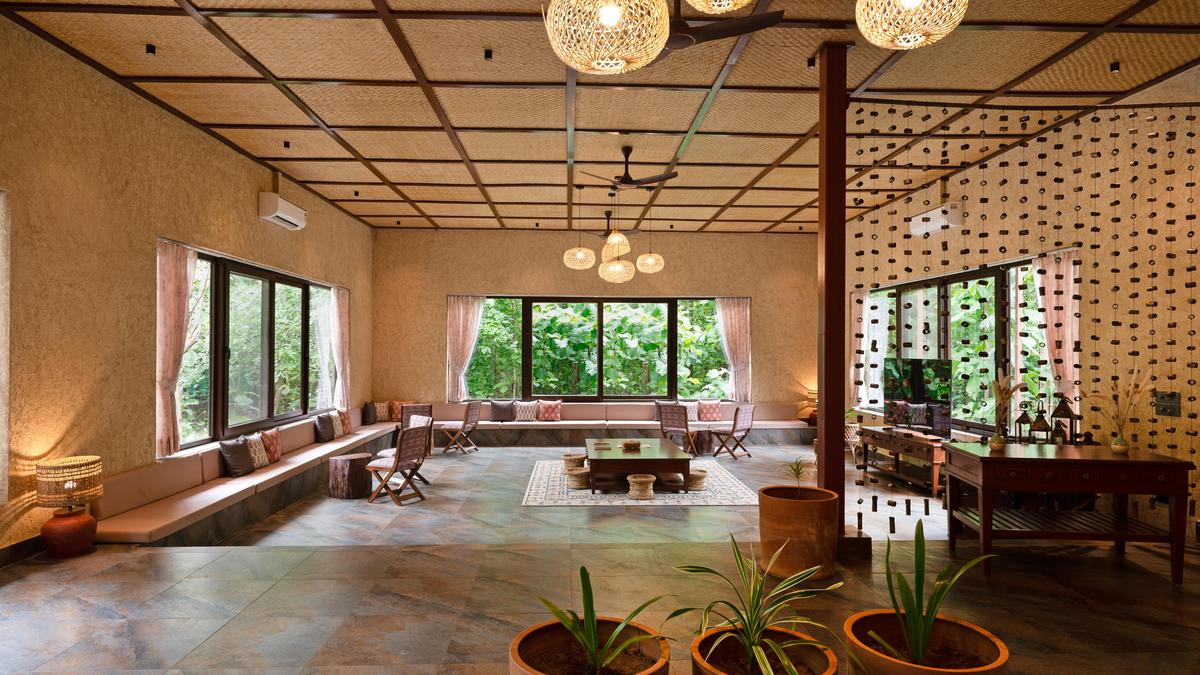
The sounds of the forest deepen; the rustle of bamboo, the rhythmic name of drongos and someplace forward, the faint alarm name of a noticed deer. Just a few turns later, as we spherical a bend, a tiger seems, reclining beneath a sal tree, its striped flank rising and falling in sluggish rhythm. For a second, all sound stills. The forest holds its breath.
I’m on a safari at Bandhavgarh, with Guljar Singh, who has been exploring these forests for years. “The forest modifications with each rain,” he says as we drive previous patches of grassland and sal thickets, the daylight sifting via layers of inexperienced. Bandhavgarh’s core space spans 720 sq. kilometres, with an extra 816 within the buffer.
We spot the Indian pitta, resplendent in turquoise and orange, hopping throughout a fallen department. Jungle owlets blink from their perch and a large wooden spider hangs between two bushes, its internet glinting like glass. Overhead, a small group of vultures circle lazily in widening spirals. The Tala zone, information Guljar Singh explains, has turn into one in every of Bandhavgarh’s few remaining strongholds for these endangered birds.
A view of the swimming pool on the villa on the Brij Sone Bagh Resort in Bandhavgarh in Madhya Pradesh.
| Picture Credit score:
Particular Association
The tiger could be the spotlight of the journey, however there may be a lot to maintain me engaged for the remainder of my keep at Brij Sone Bagh, the most recent retreat by Brij Accommodations. Mainly, the peace. The very first thing I discover once I arrive, after driving 4 hours from Madhya Pradesh’s Jabalpur airport, is the layered sounds of the forest. Cicadas, a distant name of an owl and the rustle of leaves stirred by wind.
“This retreat sits inside a pure forest of 32 acres,” says Arvind Bhende, regional improvement head of Brij Accommodations, over glasses of chilly, spiced buttermilk. Designed by architect Deepika Sethi of Atelier15, Brij Sone Bagh’s 5 villas, manufactured from native stone and timber, relaxation quietly amid outdated sal and bamboo bushes. Pathways curve naturally across the terrain, and gardens merge seamlessly with the forest. “We wished the design to defer to the land reasonably than dominate it,” Sethi says.
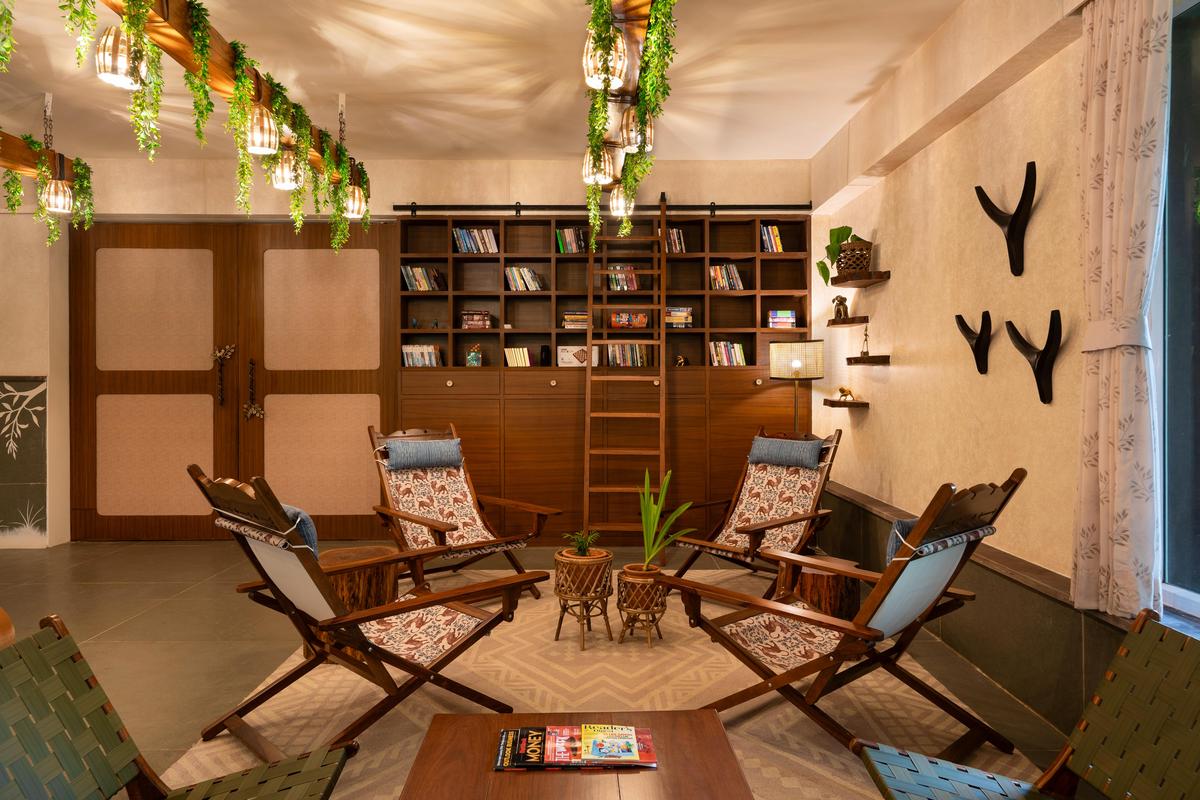
A view of Brij Sone Bagh Resort in Bandhavgarh in Madhya Pradesh.
| Picture Credit score:
SPECIAL ARRANGEMENT
My villa, named Vanar after the langur, options a mixture of cane and antique-style picket furnishings, handwoven cottons and textured partitions. Small touches reveal the area’s creative soul: dokra metalwork items from neighbouring Chhattisgarh relaxation on the bed room partitions.
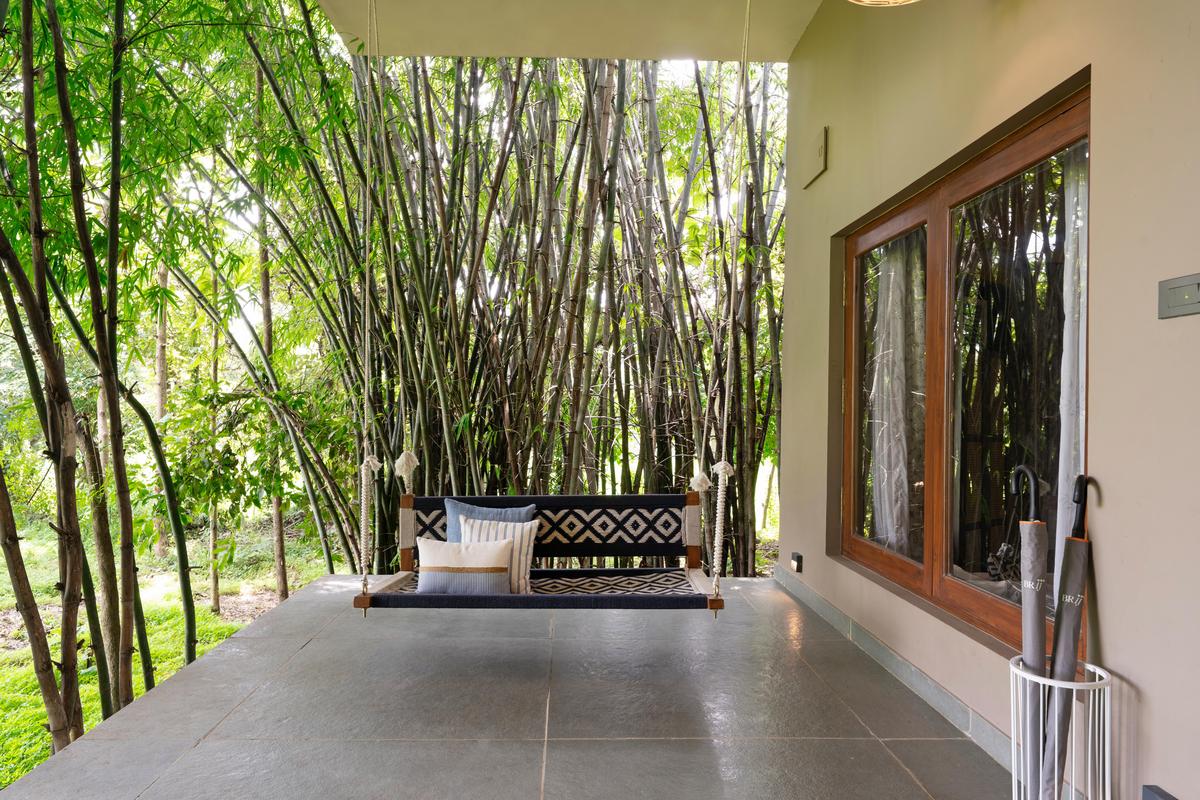
A view of Brij Sone Bagh Resort in Bandhavgarh in Madhya Pradesh.
| Picture Credit score:
SPECIAL ARRANGEMENT
I dine beneath an outdated jamun tree. The cool air carrys the scent of damp soil. An area villager, wearing conventional apparel to honour the serpent god, performs the flute as chef Dharmender Kumar – or Dharma as he’s fondly referred to as – tends to an open barbecue close by. He slowly turns the rooster marinated earlier within the day with turmeric, ginger, garlic and a mix of foraged forest herbs. The aroma of smoke, spice and mahua blooms mingles with the night time air.
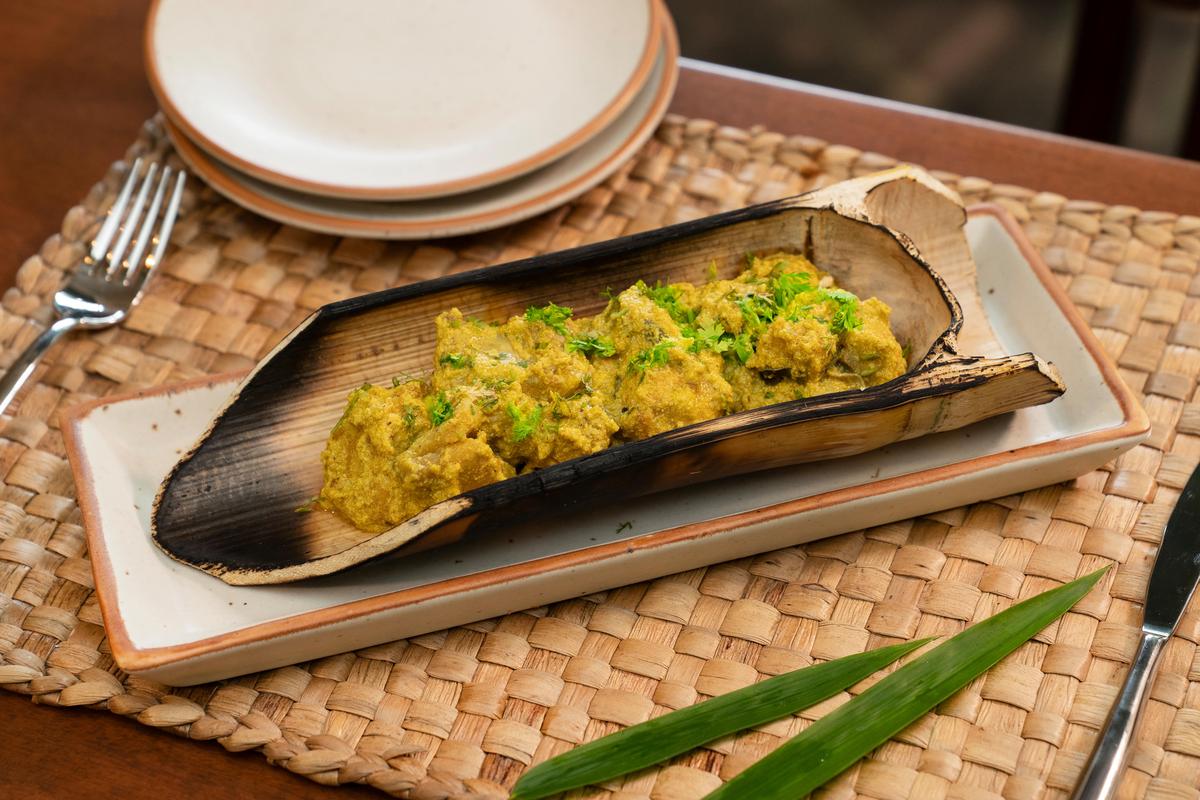
Bamboo fish
| Picture Credit score:
SPECIAL ARRANGEMENT
Dharma additionally invitations me into his kitchen for what he calls a “farm to kadhai” session. He has introduced contemporary produce from the native market – amla, bunches of coriander and inexperienced chillies. With measured ease, he reveals me put together amla pickle and a pointy, inexperienced chutney, adjusting the flavours by intuition reasonably than recipe. The rooster we marinate collectively – wrapped in banana leaves and slow-cooked in bamboo—seems later that night for dinner, tender and aromatic, tasting of smoke, herbs and rain-washed soil.
Zero-kilometre philosophy
“Virtually every little thing you eat right here,” Dharma tells me, “comes from inside just a few kilometres. That’s our zero-kilometre kitchen.” This “zero-kilometre philosophy” lies on the core of Brij Sone Bagh’s ethos. Greens come from neighbouring farms, milk from native dairy farmers and grains reminiscent of kodo millets and lentils from close by villages. Even the spices and mahua-based recipes have been sourced via native girls’s cooperatives. This strategy cuts down meals miles, sustains rural livelihoods and provides visitors a style of regional delicacies.
Sustainability initiatives
The retreat’s sustainability extends past meals. Saahas, an NGO recognized for its round waste administration, handles dry waste assortment and conducts month-to-month neighbourhood clean-ups alongside the strategy highway. Lower than 5 p.c of collected waste reaches landfills; the remaining is recycled or composted. Natural waste is processed in an on-site goshala, the place manure from cattle is used for the soil of the kitchen backyard. Water wants are met by the perennial Charan Ganga river that flows close by.
Jungle safari

Gypsies throughout morning safari in Bandhavgarh.
| Picture Credit score:
SPECIAL ARRANGEMENT

A tiger crosses the highway in entrance the the gypsies
| Picture Credit score:
Getty Photographs
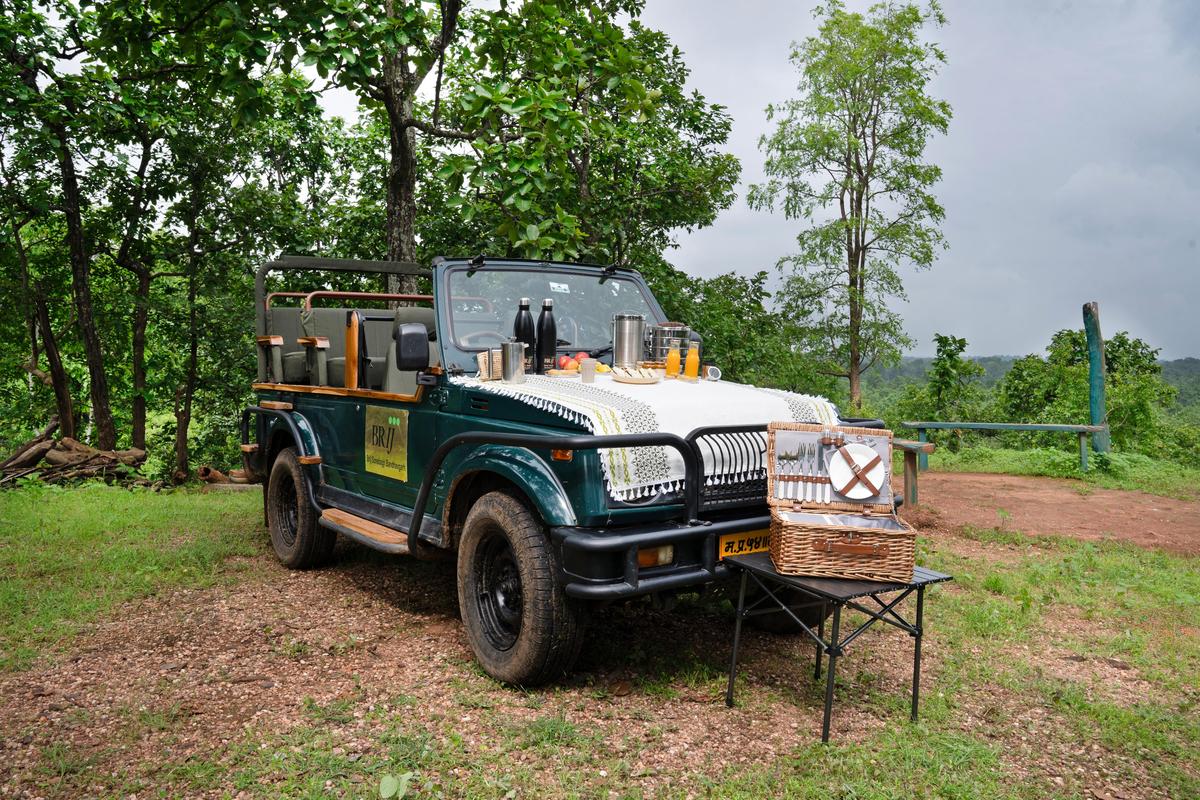
Gypsies going for morning safari in Bandhavgarh in Madhya Pradesh.
| Picture Credit score:
SPECIAL ARRANGEMENT
Again to the safari, we pause for breakfast at a delegated forest clearing, the place chef Dharma and the character guides lay out heat parathas, contemporary fruit and chilled watermelon juice on the hood of our jeep.
Earlier than leaving the Tala zone, we make a short cease at Sheshshaiya, one in every of Bandhavgarh’s most outstanding archaeological websites. Situated deep inside the forest on the base of a moss-covered hill, this historic sandstone statue of Lord Vishnu reclining on the seven-hooded serpent, Sheshnag, is believed up to now again to the tenth century AD. The sculpture is protected by the Archaeological Survey of India and stays a logo of the area’s layered historical past.
That night, I stroll to a close-by village the place solely three households proceed the native craft of bamboo weaving. “There was extra of us,” says Karishma Basoi, deftly splitting a bamboo strip. “Now, just a few make vacationer crafts.” Her fingers transfer with a reminiscence that predates the resort, the tiger reserve, even tourism itself.
The author was at Brij Sone Bagh in Bandhavgarh on invitation by Brij Accommodations.
Revealed – November 27, 2025 11:10 am IST







